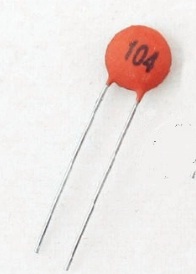It is constructed of two or more alternating layers of ceramic and a metal layer acting as the electrodes.
Ceramic capacitor orientation.
Ceramic capacitor capacitors may become cracked when boards bend during handling in processes after the capacitors are soldered onto the boards.
Ceramic capacitors have no polarity.
For this reason they re usually much safer durable than electrolytic capacitors.
Ceramic capacitors are divided into two.
Tecdia uses variations in chip thickness by lapping as well as electrode ceramic size and dielectric constant to construct capacitors.
They like to collect charge in one polarity on their plates.
These are the capacitors that you ll likely be working with on your first.
A ceramic capacitor is a fixed value capacitor where the ceramic material acts as the dielectric.
For axial leaded capacitors in which the leads come out of the opposite ends of the capacitor there may be an arrow that points to the negative end symbolizing the flow of charge.
The composition of the ceramic material defines the electrical behavior and therefore applications.
The three most common type of capacitors that you ll run into include the ceramic capacitor electrolytic capacitor and supercapacitor.
If you have to worry about the polarity at all when it comes to c.
To figure out capacitor polarity the stripe on an electrolytic capacitor tells you the negative end.
April 30 2015 12 02 06 pm i have that experience as well just learning what the amp is great at and loving it for that rather than what you think it will sound like.
Capacitor foil orientation reply 42 on.
This permits a broad range of capacitance values.
Polarized capacitors are only rated for voltage potentials in one direction.
Which is one reason why they re used in military applications.
A non polarized capacitor such as generic ceramic types are capable of collecting charge in both positive and negative polarity you can use them in circuits that have voltages that swing both above and below your zero gnd reference.

